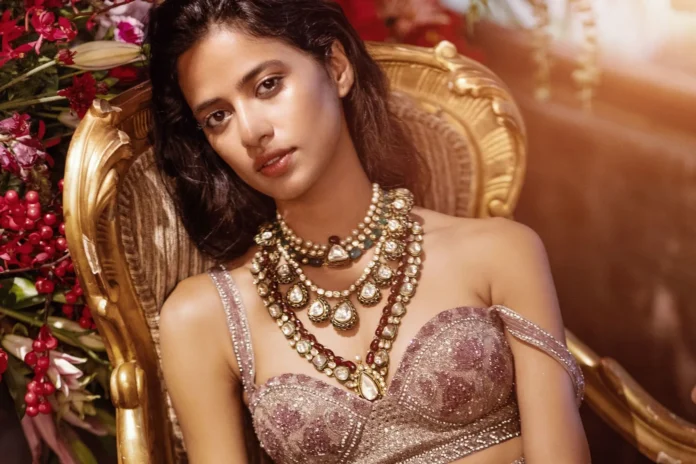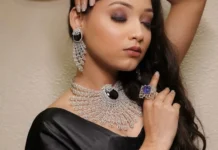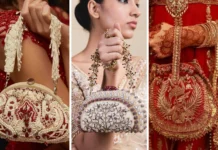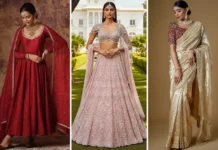Let’s take a timeless journey through India’s royal heritage through these unique and memorable heritage bridal jewellery designs!
Within the grand canvas of Indian weddings, heritage bridal jewellery is the gemstone, intertwining centuries of artistry, tradition, and royal majesty. These legendary designs go beyond mere decoration, representing strong symbols of heritage, prosperity, and the holy union of matrimony. As contemporary brides wish to pay tribute to their lineage while making fashion statements, heritage jewellery designs come with the ideal combination of timelessness and modernity.
Let’s delve deep into the world of timeless elegance of heritage bridal jewellery in this blog created by our team at Wedding Affair!
Table of Contents:
The Rich Legacy of Indian Heritage Jewellery
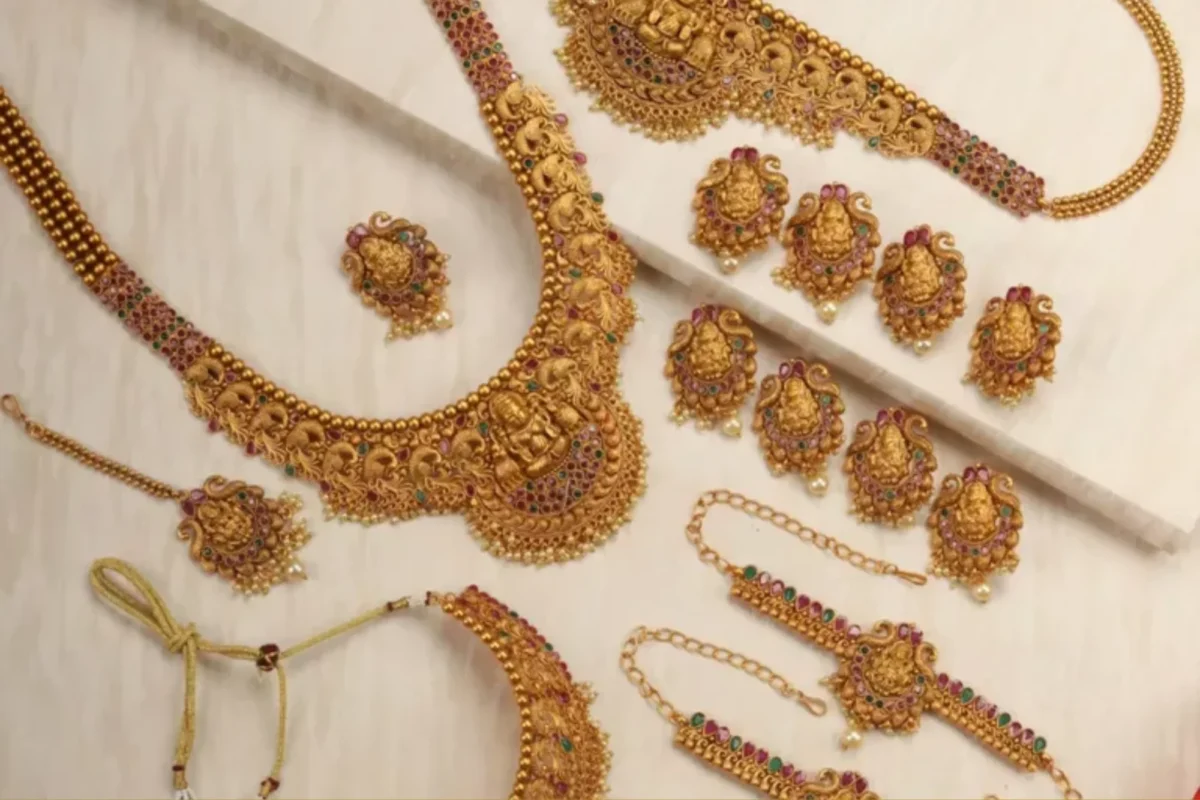
Indian heritage jewellery is inspired by the rich courts of ancient kingdoms, every region adding its own artistic signature to the grandeur of bridal adornment. From the exquisite temple jewellery of Tamil Nadu to the dramatic Kundan work of Rajasthan, from the fine filigree of Odisha to the dramatic statement pieces of Gujarat, each design has a story to tell about cultural pride and artistic superiority.
These patterns have stood the test of time not so much because of their looks, but because they reflect the cultural and spiritual values that are the pillars of Indian civilisation. Every design, whether it’s the holy lotus symbolising purity, the dancing peacock signifying grace, or the guarding elephant indicating wisdom and power, contains profound meaning that transcends generations of brides.
Read Also: Wedding Guest Etiquettes 101: Do’s and Don’ts
Temple Jewellery: Divine Inspiration for Earthly Celebrations
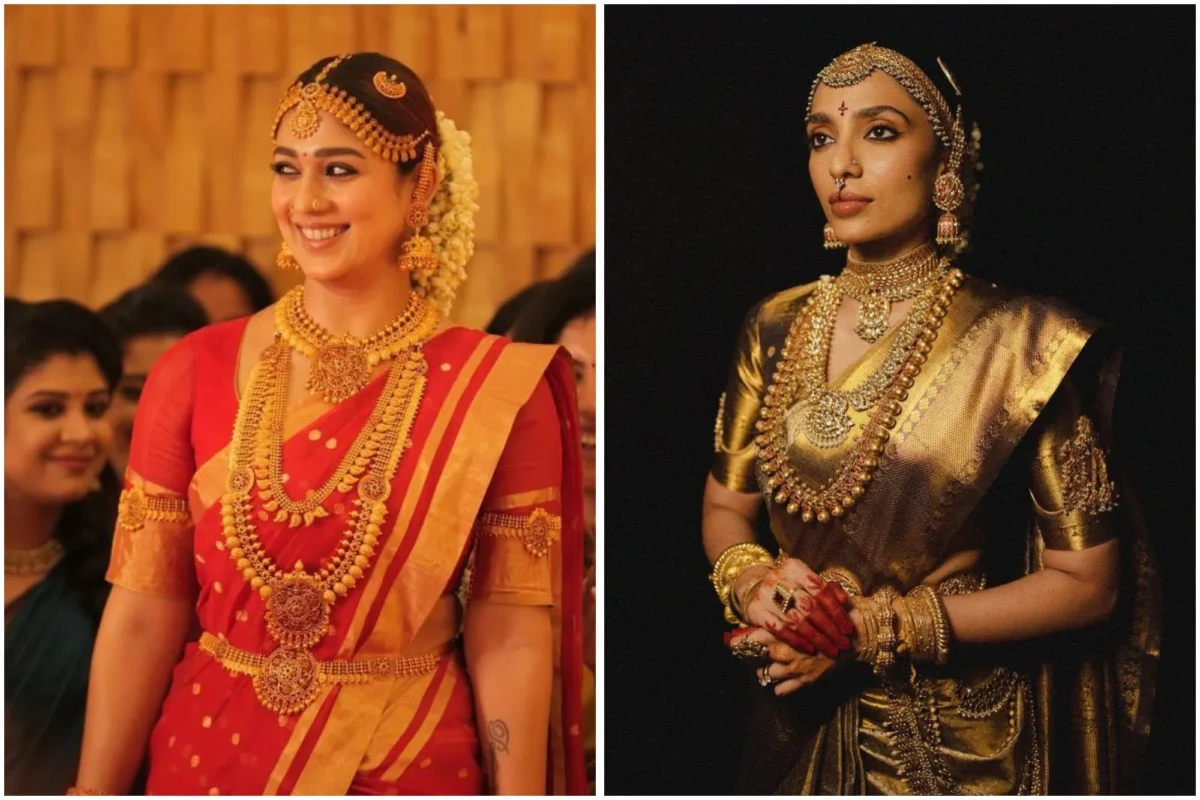
Gopuram-Inspired Necklaces
Inspired by South India’s imposing temple gopurams, these necklaces replicate architectural details in gold. With the multi-level design usually including deities, mythological figures, and flower motifs, the result is both a religiously meaningful and beautiful piece. Contemporary versions include detachable parts, enabling brides to personalise their appearance for various wedding ceremonies.
Dancing Goddess Chokers
These magnificent chokers showcase the classical dance forms of India, with detailed depictions of goddesses like Saraswati, Lakshmi, and Parvati in various dance poses. The intricate craftsmanship required to create these pieces makes each one a masterpiece, while the spiritual significance adds a layer of blessing to the bride’s special day.
Temple Bell Jhumkas
Inspired by temple ceiling bells, these earrings bring together the musical tinkle of action with flawless workmanship. Conventional designs are made of hollow gold with delicate engravings, while modern versions may use coloured gemstones or pearl drops to enhance sophistication.
Kundan and Polki: The Royal Heritage
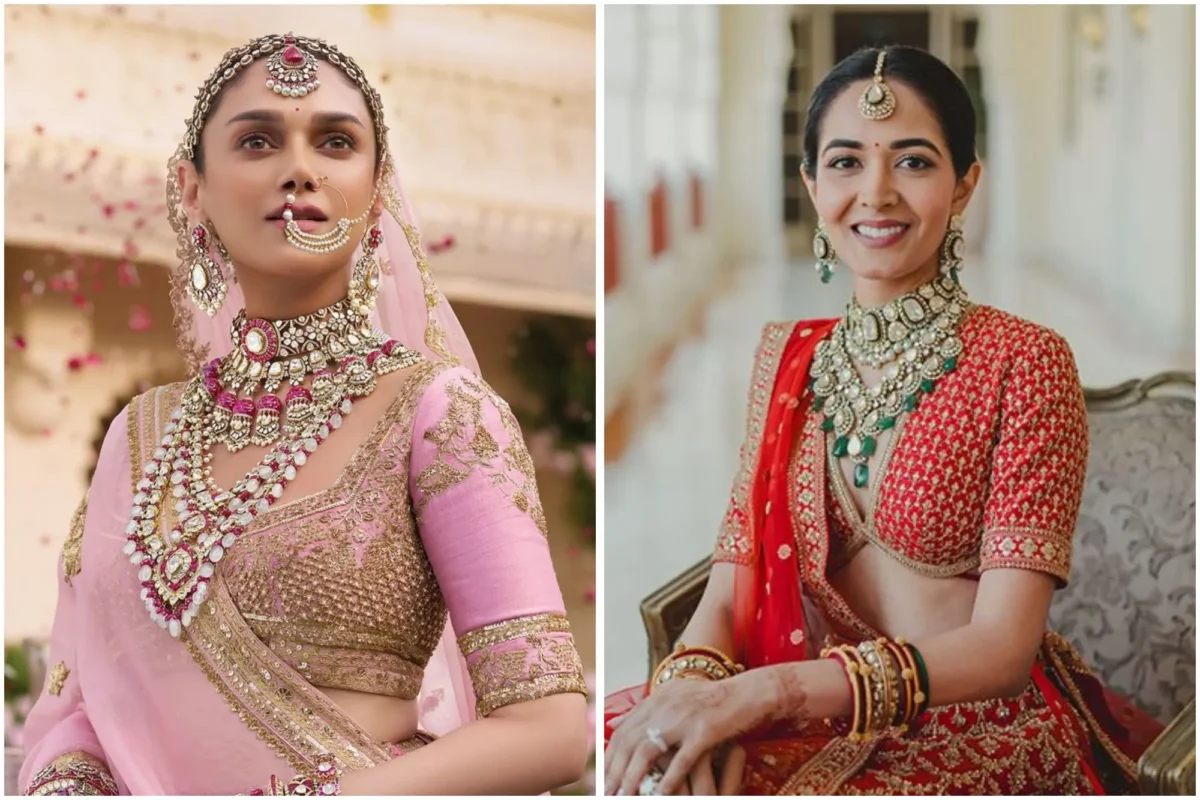
Mughal-Inspired Statement Pieces
There is no doubt that the Mughal style has left its mark on Indian jewellery, and Kundan and Polki jewellery are the epitome of this craftsmanship. These uncut diamond designs produce pieces of stunning brilliance and fire, ideal for brides desiring to reflect the glory of royal courts.
The Maharani Haar
This multi-stranded necklace usually has three to five strands of different lengths, each of which is embellished with uncut diamonds, emeralds, rubies, and pearls. The pendant in the middle can have a big uncut diamond surrounded by colored gemstones, making the piece fit for royalty.
Chandbali Excellence
These crescent-shaped earrings can trace their history back to the Mughal courts and remain a most desired heritage design. The original chandbali showcases intricate Kundan work with hanging pearls, but newer interpretations may add in current combinations of gemstones while adhering to the classic look.
Iconic Motifs and Their Modern Interpretations
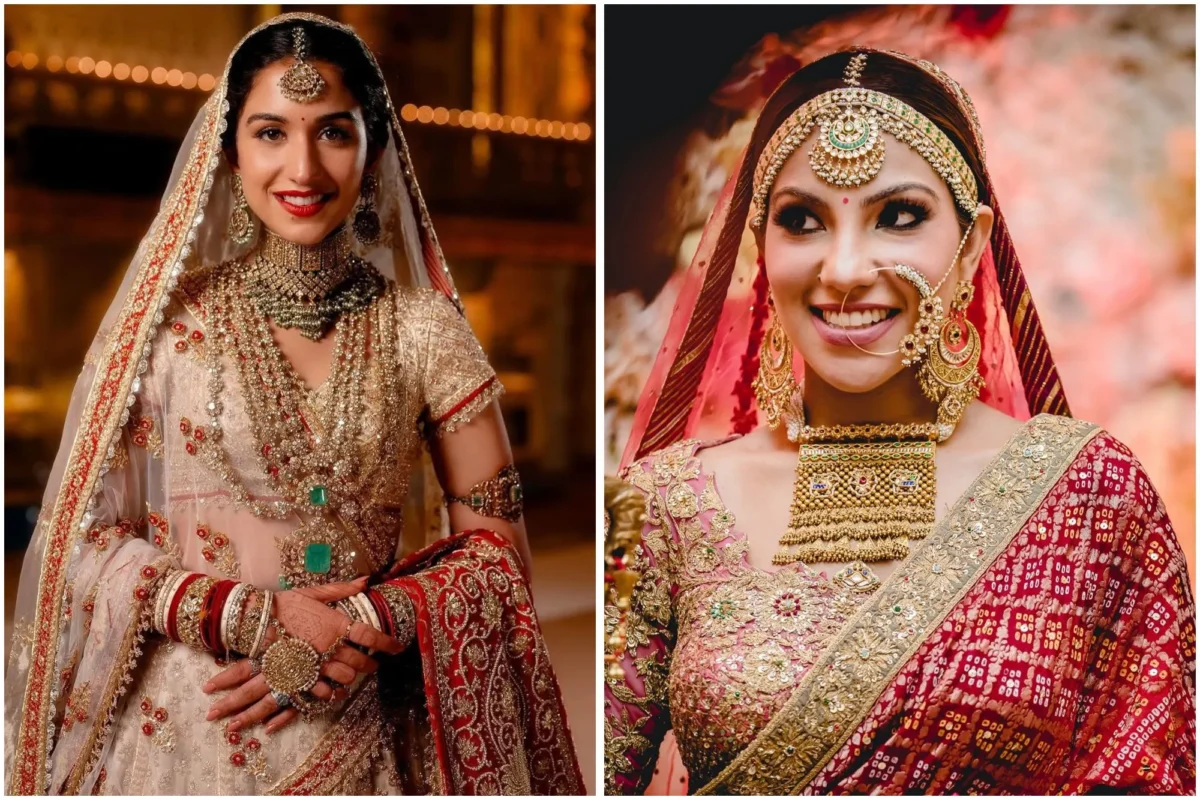
The Eternal Paisley
The mango or paisley pattern signifies abundance and fertility and is thus ideal for wedding jewellery. Traditional designs incorporate ornate paisley designs in gold work, whereas contemporary interpretations may employ diamond-encrusted paisleys or integrate the design into modern surroundings.
Lotus Blossoms
Sacred to Hindu culture, the lotus represents purity and divine loveliness. Heritage jewellery encompasses lotus designs in every configuration, from fine engravings to full-bodied three-dimensional flowers. Modern designers create modular lotus pieces that can be worn independently or used in concert for the greatest effect.
Peacock Pride
India’s national bird, the peacock, symbolises beauty, grace, and pride. Classic peacock jewellery shows feather details with intricate designs and gemstone-embellished bodies, but contemporary versions may simplify the design while upholding the intrinsic elegance of the motif.
Colour Stories in Heritage Jewellery
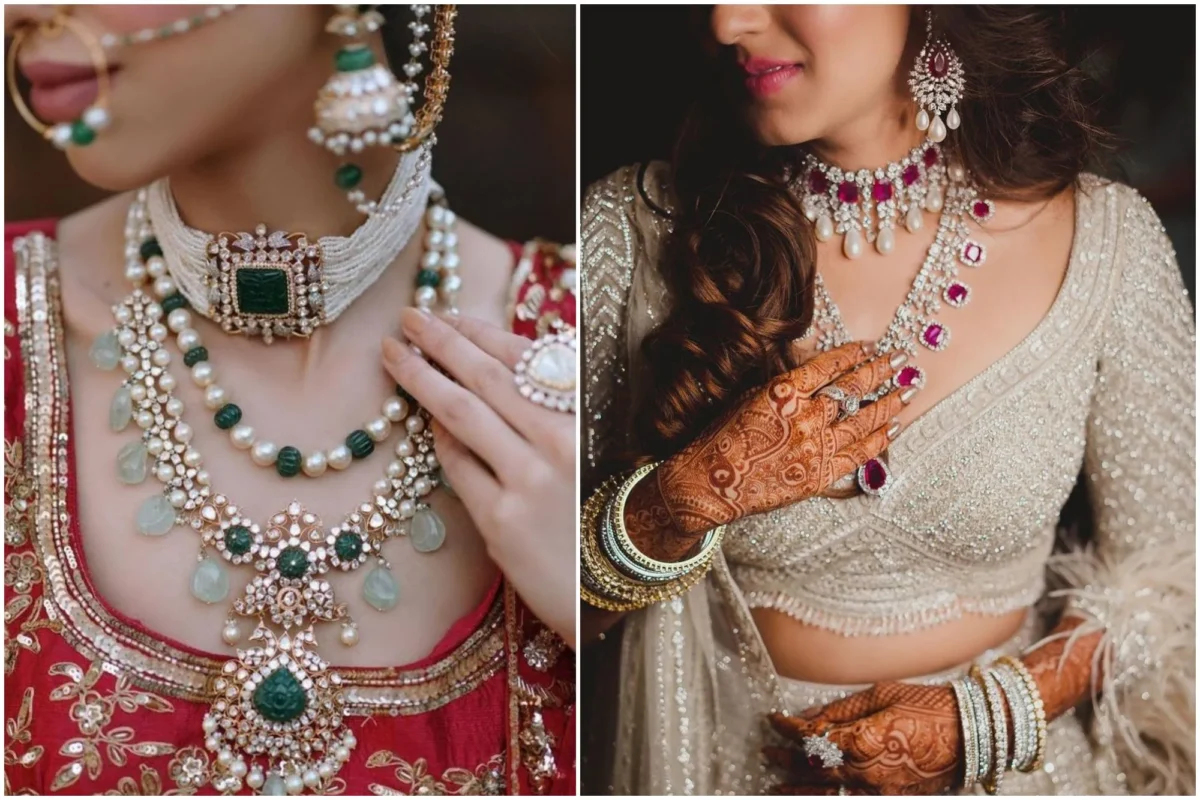
The Sacred Navratna
The combination of nine gems is of particular significance in Indian astrology and traditional jewellery. Classic Navratna jewellery includes ruby, pearl, red coral, emerald, yellow sapphire, diamond, blue sapphire, hessonite, and cat’s eye in particular combinations meant to usher in good luck.
Emerald Grandeur
Referred to as Panna in Sanskrit, emeralds have been a prized part of Indian jewellery forever. Traditional designs tend to come with large emerald centre stones set with diamonds around them, making the pieces both luxurious and spiritually meaningful.
Ruby Radiance
Rubies, or Manik, represent passion and power. Classic bridal sets tend to use ruby and diamond pairings, with the intense red colours symbolising the flame of love and dedication.
Read Also: World Bollywood Day: On-Screen Marriages That Teach Us Love
Frequently Asked Questions:
How is heritage jewellery different from contemporary bridal jewellery?
A: Heritage jewellery emphasises traditional designs, motifs, and craftsmanship techniques that have historical and cultural significance. Contemporary jewellery may incorporate modern design elements, streamlined aesthetics, or international influences, while heritage pieces focus on preserving ancient artistic traditions.
Can heritage jewellery be worn by brides from all Indian communities?
A: Absolutely! While certain designs may have regional origins, heritage jewellery has universal appeal. Many designs have transcended regional boundaries and are appreciated across different Indian communities. Brides often choose pieces that resonate with their personal style and family traditions.
How can I verify the authenticity of heritage jewellery designs?
A: Look for:
- Hallmark certification for gold purity
- Certified gemstones with proper documentation
- Traditional craftsmanship techniques
- Reputable jewellers with established heritage collections
- Detailed craftsmanship that reflects traditional methods
Heritage bridal jewellery designs allow contemporary brides to anchor themselves in their heritage while making a glamorous fashion statement. These adornments symbolise physical connections to India’s rich cultural past and religious heritage. No matter if you opt for the divine inspiration of temple jewellery, the royal splendour of Kundan work, or the regional specialities that are a reflection of your family’s origins, heritage bridal jewellery makes sure that your wedding day is dressed up with pieces that respect the past but celebrate the future.

